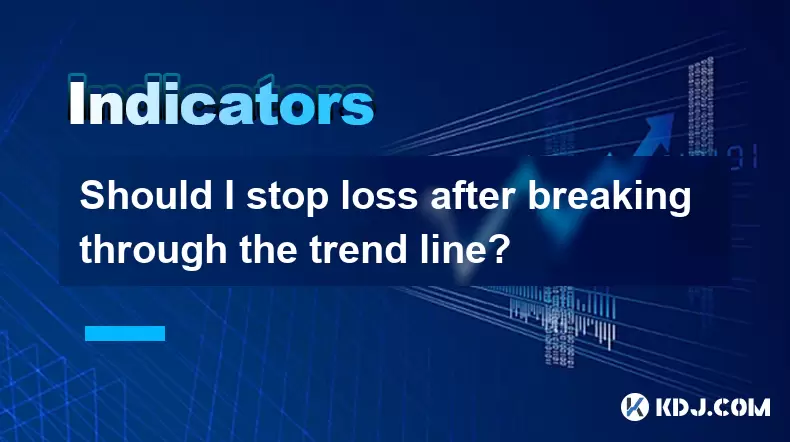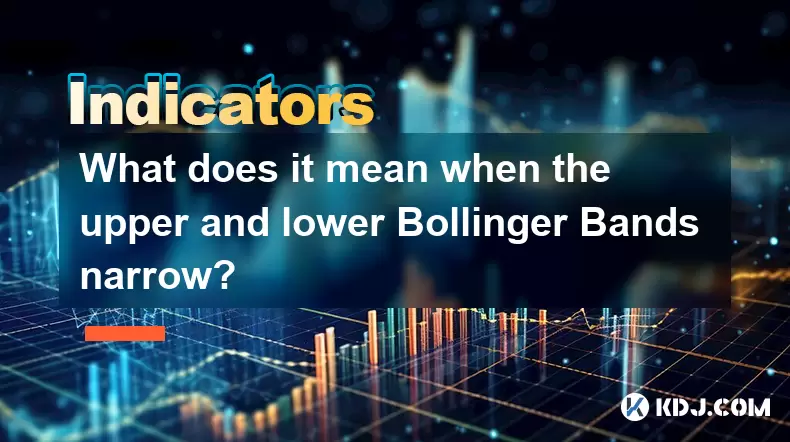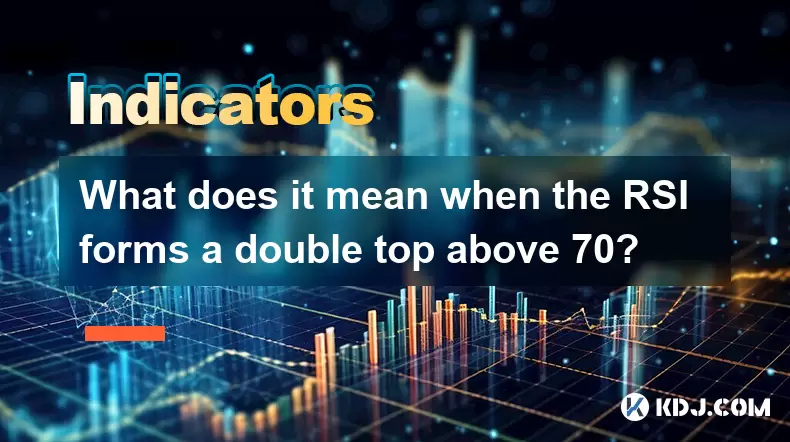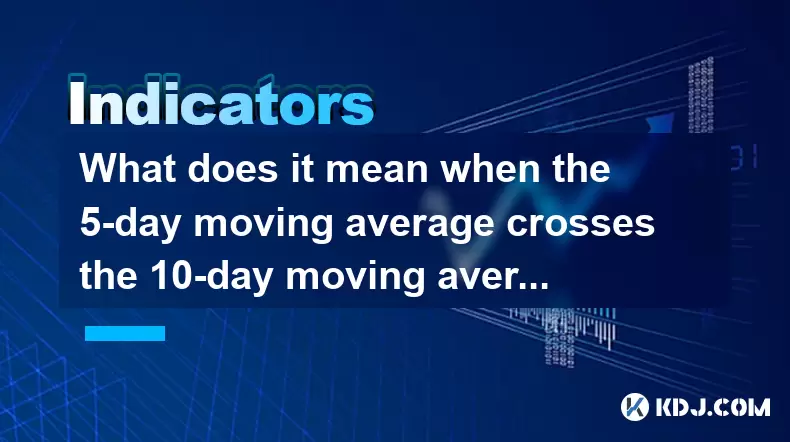-
 Bitcoin
Bitcoin $116800
0.20% -
 Ethereum
Ethereum $4192
5.51% -
 XRP
XRP $3.287
0.12% -
 Tether USDt
Tether USDt $1.000
0.00% -
 BNB
BNB $808.7
2.39% -
 Solana
Solana $180.4
2.23% -
 USDC
USDC $0.9999
0.01% -
 Dogecoin
Dogecoin $0.2390
6.80% -
 TRON
TRON $0.3365
-0.71% -
 Cardano
Cardano $0.8081
2.20% -
 Hyperliquid
Hyperliquid $43.74
6.50% -
 Chainlink
Chainlink $21.27
9.03% -
 Stellar
Stellar $0.4530
0.07% -
 Sui
Sui $3.908
3.00% -
 Bitcoin Cash
Bitcoin Cash $575.0
-1.02% -
 Hedera
Hedera $0.2632
0.61% -
 Avalanche
Avalanche $24.17
3.25% -
 Ethena USDe
Ethena USDe $1.001
0.02% -
 Litecoin
Litecoin $122.1
-0.24% -
 Toncoin
Toncoin $3.376
0.35% -
 UNUS SED LEO
UNUS SED LEO $8.981
-0.15% -
 Shiba Inu
Shiba Inu $0.00001373
5.86% -
 Uniswap
Uniswap $10.85
2.17% -
 Polkadot
Polkadot $4.080
4.03% -
 Dai
Dai $1.000
-0.02% -
 Pepe
Pepe $0.00001228
8.92% -
 Bitget Token
Bitget Token $4.506
0.09% -
 Cronos
Cronos $0.1581
3.76% -
 Monero
Monero $270.1
0.81% -
 Ethena
Ethena $0.7293
15.86%
Should I stop loss after breaking through the trend line?
Trend lines help identify market direction in crypto trading; breaking through them signals potential shifts, prompting stop-loss order adjustments.
Jun 02, 2025 at 11:35 pm

Understanding Trend Lines in Cryptocurrency Trading
In the world of cryptocurrency trading, trend lines play a crucial role in technical analysis. They help traders identify the direction of the market and potential areas of support and resistance. A trend line is drawn by connecting a series of highs or lows on a price chart, forming a straight line that represents the current market trend. When the price of a cryptocurrency breaks through this trend line, it often signals a potential change in the market direction, prompting traders to consider various strategies, including the use of stop-loss orders.
What is a Stop-Loss Order?
A stop-loss order is an order placed with a broker to buy or sell a security when it reaches a certain price. In the context of cryptocurrency trading, a stop-loss order is used to limit an investor's loss on a position. For instance, if you buy Bitcoin at $50,000 and set a stop-loss order at $45,000, the order will automatically sell your Bitcoin if its price falls to $45,000, thus capping your potential loss at $5,000 per Bitcoin.
The Impact of Breaking Through a Trend Line
When a cryptocurrency's price breaks through a trend line, it often indicates a shift in market sentiment. If the price breaks above an upward trend line, it might suggest the beginning of a bullish trend. Conversely, if the price falls below a downward trend line, it might indicate the start of a bearish trend. This break can be a signal for traders to adjust their strategies, including their stop-loss orders.
Should You Use a Stop-Loss Order After a Breakthrough?
The decision to use a stop-loss order after a trend line breakthrough depends on several factors, including your risk tolerance, trading strategy, and the specific market conditions. Here are some considerations:
Risk Management: If you are a conservative trader, using a stop-loss order can help protect your capital from significant losses. After a trend line break, setting a stop-loss order can help you exit a position before the price moves too far against you.
Market Volatility: Cryptocurrency markets are known for their high volatility. A stop-loss order can be particularly useful in such an environment, as it helps automate the process of cutting losses during sudden price drops.
Trading Strategy: If your trading strategy involves holding positions for the long term, you might be less inclined to use a stop-loss order after a trend line break. Long-term traders might view such breaks as temporary fluctuations rather than a signal to exit their positions.
False Breakouts: Sometimes, a price may break through a trend line only to reverse back within the trend. This is known as a false breakout. In such cases, a stop-loss order set too close to the trend line might result in unnecessary exits from profitable positions.
How to Set a Stop-Loss Order After a Trend Line Breakthrough
If you decide to use a stop-loss order after a trend line break, here's how you can set it up:
Identify the Breakthrough Point: First, identify the exact point where the price breaks through the trend line. This can be done by observing the candlestick that closes outside the trend line.
Determine the Stop-Loss Level: Decide on the price level at which you want the stop-loss order to trigger. This could be a certain percentage below the breakthrough point or a specific price level that aligns with your risk management strategy.
Place the Order: On most trading platforms, you can place a stop-loss order by selecting the cryptocurrency you are trading, entering the stop-loss price, and confirming the order. Here's a step-by-step guide:
- Log into your trading platform.
- Navigate to the cryptocurrency you are trading.
- Click on the 'Orders' or 'Trade' section.
- Select 'Stop-Loss' from the order types.
- Enter the stop-loss price you determined.
- Confirm the order.
Monitor and Adjust: After placing the stop-loss order, continue to monitor the market conditions. You might need to adjust the stop-loss level if the market moves in your favor or if new information suggests a different risk profile.
Considerations for Different Types of Trend Line Breakthroughs
Different types of trend line breakthroughs can warrant different approaches to stop-loss orders:
Upward Trend Line Break: If the price breaks above an upward trend line, indicating potential bullish momentum, you might consider moving your stop-loss order to a higher level to lock in profits while still protecting against a reversal.
Downward Trend Line Break: If the price breaks below a downward trend line, suggesting bearish momentum, you might set a stop-loss order to limit potential losses if the bearish trend continues.
Sideways Trend Line Break: In a sideways market, where the price moves within a range, a break outside this range can signal a new trend. In such cases, a stop-loss order can help manage risk if the price moves against your position.
Frequently Asked Questions
Q: How can I differentiate between a true trend line break and a false breakout?
A: Differentiating between a true trend line break and a false breakout involves observing the price action following the break. A true break is often confirmed by sustained movement in the direction of the break, increased trading volume, and the price closing outside the trend line for multiple periods. A false breakout, on the other hand, might see the price quickly returning within the trend line, often with lower volume.
Q: What are some common mistakes traders make when setting stop-loss orders after a trend line break?
A: Common mistakes include setting the stop-loss order too close to the trend line, which can result in being stopped out during normal market fluctuations, and setting it too far away, which might lead to larger than necessary losses. Additionally, failing to adjust the stop-loss order as the market moves can result in missed opportunities to lock in profits or reduce risk.
Q: Can I use stop-loss orders in combination with other trading tools after a trend line break?
A: Yes, stop-loss orders can be effectively used in combination with other trading tools such as take-profit orders, trailing stops, and technical indicators like moving averages and RSI. Combining these tools can help create a more robust trading strategy that manages risk while maximizing potential gains.
Q: How does the time frame of the chart affect the decision to use a stop-loss order after a trend line break?
A: The time frame of the chart can significantly impact the decision to use a stop-loss order. On shorter time frames, such as 1-hour or 15-minute charts, trend line breaks might be more frequent and less reliable, potentially leading to more false breakouts. On longer time frames, such as daily or weekly charts, trend line breaks are often more significant and might warrant the use of a stop-loss order to manage risk over a longer period.
Disclaimer:info@kdj.com
The information provided is not trading advice. kdj.com does not assume any responsibility for any investments made based on the information provided in this article. Cryptocurrencies are highly volatile and it is highly recommended that you invest with caution after thorough research!
If you believe that the content used on this website infringes your copyright, please contact us immediately (info@kdj.com) and we will delete it promptly.
- Crypto Airdrops & Opportunities: What's Hot in August 2025
- 2025-08-09 22:30:12
- XRP, Cardano, and the Alluring Alternatives: A 2025 Crypto Landscape
- 2025-08-09 22:35:12
- Shiba Inu (SHIB) in the Crypto Landscape: Community, Trends, and Future Outlook
- 2025-08-09 20:30:12
- Solana, Unilabs, and Social Trends: Decoding the Crypto Buzz
- 2025-08-09 21:10:12
- Dogecoin, Meme Coins, and Layer Brett: Chasing the Next 100x
- 2025-08-09 20:50:12
- Crypto Presales in 2025: Are They Set to Outperform Launches?
- 2025-08-09 20:55:15
Related knowledge

What does it mean when the MACD histogram continues to shorten but the price reaches a new high?
Aug 09,2025 at 09:29pm
Understanding the MACD Histogram and Its ComponentsThe MACD (Moving Average Convergence Divergence) indicator is a widely used technical analysis tool...

What does it mean when the Triple Moving Average (TRIX) turns downward but the price doesn't fall?
Aug 09,2025 at 12:42pm
Understanding the Triple Moving Average (TRIX) IndicatorThe Triple Moving Average, commonly known as TRIX, is a momentum oscillator designed to filter...

What does it mean when the Williams' oscillator repeatedly hits bottoms but fails to rebound?
Aug 09,2025 at 09:28am
Understanding the Williams %R OscillatorThe Williams %R oscillator, developed by Larry Williams, is a momentum indicator used in technical analysis to...

What does it mean when the upper and lower Bollinger Bands narrow?
Aug 09,2025 at 03:00pm
Understanding Bollinger Bands in Cryptocurrency TradingBollinger Bands are a widely used technical analysis tool in the cryptocurrency market, develop...

What does it mean when the RSI forms a double top above 70?
Aug 09,2025 at 05:50pm
Understanding the RSI and Overbought ConditionsThe Relative Strength Index (RSI) is a momentum oscillator that measures the speed and change of price ...

What does it mean when the 5-day moving average crosses the 10-day moving average but the 20-day moving average remains upward?
Aug 09,2025 at 03:35pm
Understanding Moving Averages in Cryptocurrency TradingMoving averages are foundational tools in technical analysis, especially within the cryptocurre...

What does it mean when the MACD histogram continues to shorten but the price reaches a new high?
Aug 09,2025 at 09:29pm
Understanding the MACD Histogram and Its ComponentsThe MACD (Moving Average Convergence Divergence) indicator is a widely used technical analysis tool...

What does it mean when the Triple Moving Average (TRIX) turns downward but the price doesn't fall?
Aug 09,2025 at 12:42pm
Understanding the Triple Moving Average (TRIX) IndicatorThe Triple Moving Average, commonly known as TRIX, is a momentum oscillator designed to filter...

What does it mean when the Williams' oscillator repeatedly hits bottoms but fails to rebound?
Aug 09,2025 at 09:28am
Understanding the Williams %R OscillatorThe Williams %R oscillator, developed by Larry Williams, is a momentum indicator used in technical analysis to...

What does it mean when the upper and lower Bollinger Bands narrow?
Aug 09,2025 at 03:00pm
Understanding Bollinger Bands in Cryptocurrency TradingBollinger Bands are a widely used technical analysis tool in the cryptocurrency market, develop...

What does it mean when the RSI forms a double top above 70?
Aug 09,2025 at 05:50pm
Understanding the RSI and Overbought ConditionsThe Relative Strength Index (RSI) is a momentum oscillator that measures the speed and change of price ...

What does it mean when the 5-day moving average crosses the 10-day moving average but the 20-day moving average remains upward?
Aug 09,2025 at 03:35pm
Understanding Moving Averages in Cryptocurrency TradingMoving averages are foundational tools in technical analysis, especially within the cryptocurre...
See all articles

























































































